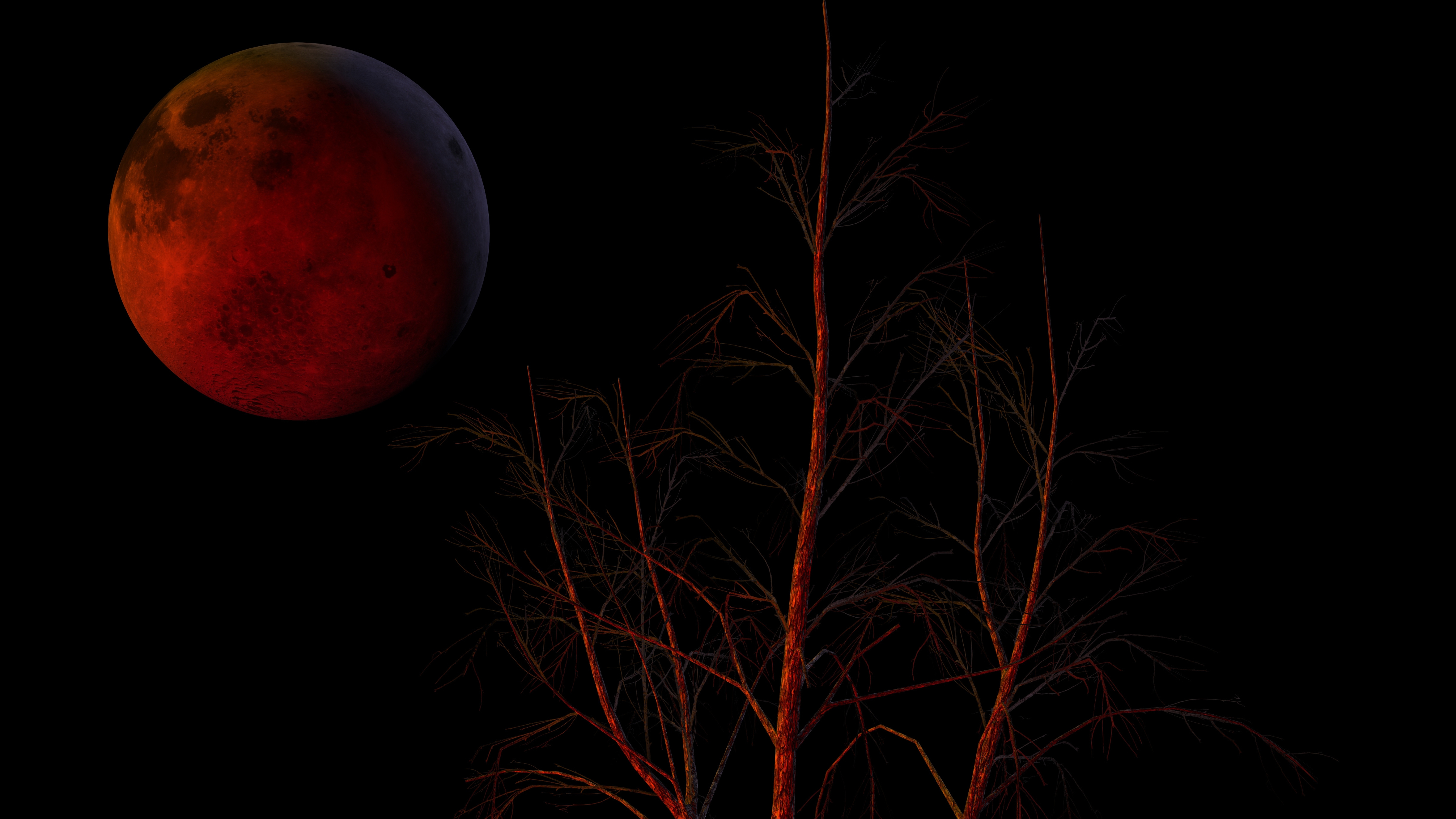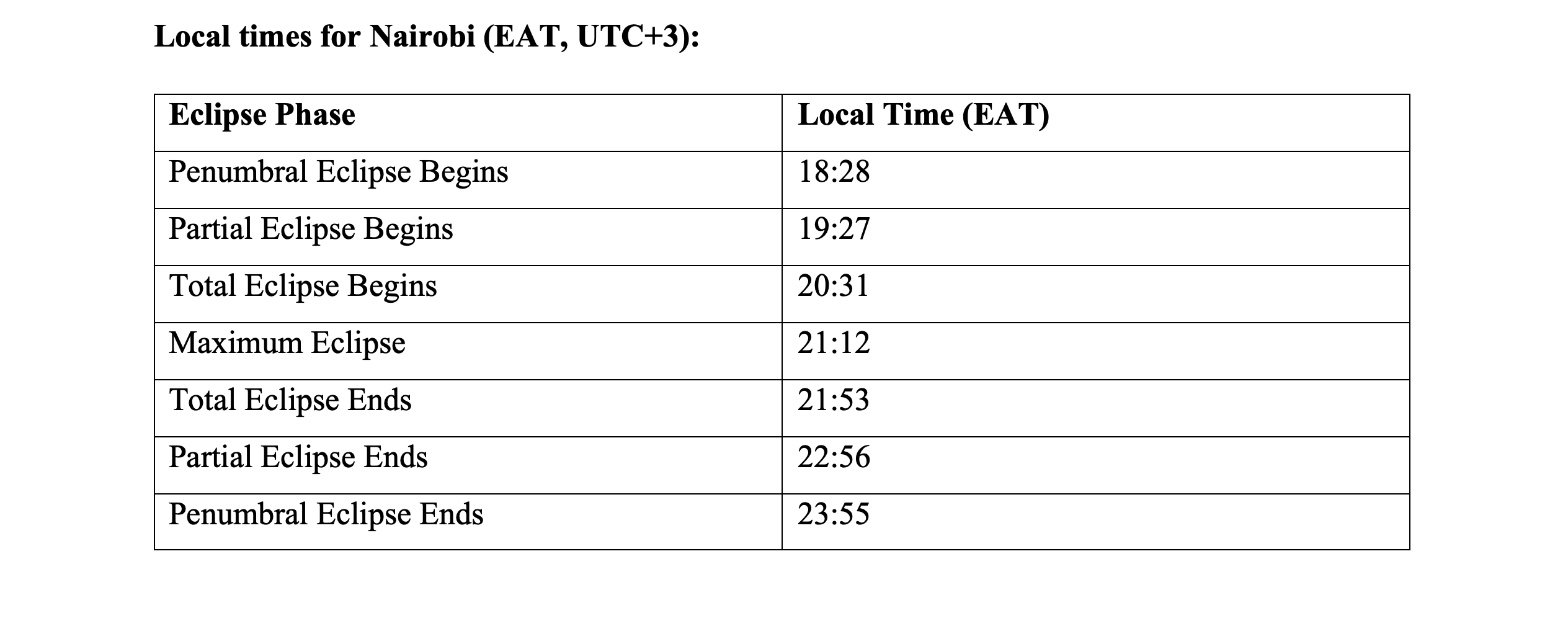
Blood moon as seen from Earth
Next Total Lunar Eclipse in Kenya
Date: Sunday, September 7, 2025
Location: Visible throughout Kenya
Blog
written by Brian Mutula and Joan Tanin
The Moon (also known as Mwezi in Swahili) has long been a source of fascination for humanity, from ancient myths to modern science. This is the Earth's only natural satellite and plays a crucial role in our planet's stability and rhythm. Its gravitational pull creates the ocean tides, its gentle glow has guided travelers for millennia, and its regular phases have shaped calendars across cultures. Without the Moon, Earth would be a dramatically different world: the planet's axis would stagger chaotically over time, leading to extreme and unpredictable climate shifts. Nights would be much darker, and the biological rhythms of many species — including humans — could be disrupted.
Beyond its scientific importance, the Moon is a stage for celestial wonders that captivate skywatchers around the world. One of the most spectacular of these events is the lunar eclipse, when Earth's shadow is cast upon the Moon in a cosmic alignment. A lunar eclipse happens when the Earth passes directly between the Sun and the Moon, blocking sunlight and casting a shadow on the lunar surface. This event can only occur during a full Moon, when the Moon is on the opposite side of Earth from the Sun, making the perfect alignment possible. Among all its phases and appearances, the Moon turning a deep, glowing red during a total lunar eclipse is one of the most mesmerizing sights in the night sky — a reminder of the graceful mechanics of our solar system.

Blood moon as seen from Earth
Next Total Lunar Eclipse in Kenya
Date: Sunday, September 7, 2025
Location: Visible throughout Kenya

Global Visibility
Lunar eclipses are visible to anyone on the night side of Earth during the event. Unlike solar eclipses, which are seen only along a narrow path, a lunar eclipse can be observed from entire continents simultaneously. For this September 2025 event:
• Fully visible: Africa, Asia, Australia
• Partial visibility: Eastern Europe
• Not visible: Most of North and South America (Moon below horizon)
(EAT, UTC+3):
Viewing Safety
Unlike solar eclipses, no special glasses or filters are required to watch a lunar eclipse. It is completely safe to view with the naked eye. For a closer and more detailed view of the red Moon, binoculars or a telescope can be used, but they are not necessary to enjoy the event.
A Lunar Eclipse from the Moon: A Spectacular View
While we on Earth watch the Moon slowly turn red during a total lunar eclipse, the view from the Moon would be even more breathtaking and surreal.
Imagine standing on the Moon’s surface during such an event. Instead of seeing the Moon darken, you would look up and witness a total solar eclipse caused by Earth itself. The massive blue-and-white globe of Earth would completely block the Sun, plunging your lunar location into darkness. But unlike a normal solar eclipse on Earth, this one would last much longer—over an hour—because Earth's shadow is far larger than the Moon’s.
Around the edges of the darkened Earth, you would see a brilliant ring of fire—not from the Sun’s corona, but from all the sunsets and sunrises happening on Earth simultaneously. This glowing red-orange halo is the same refracted light that, when projected onto the Moon, causes it to appear red to observers back on Earth.
Read the full Article
Sun - Earth - Moon System